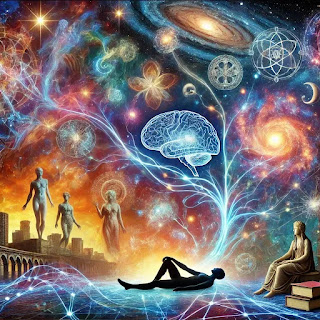Why Do We Laugh?
Laughter is a complex physiological and psychological response that can be triggered by various stimuli and serves multiple functions. Here's an overview of why we laugh from different perspectives:
1. Biological Perspective:
Brain Activity: Laughter activates multiple regions of the brain, including the frontal lobe (for social and cognitive understanding) and the limbic system (associated with emotions). The release of endorphins (feel-good hormones) is triggered, helping to elevate mood.
Physiological Benefits: Laughter increases oxygen intake, stimulates the heart, lungs, and muscles, and enhances the release of dopamine, serotonin, and other mood-boosting chemicals. It reduces the level of stress hormones like cortisol and adrenaline.
Evolutionary Function: Some scientists believe that laughter evolved as a social bonding tool. It helped early humans communicate and form connections within their groups, as laughter signals safety and understanding.
2. Psychological Perspective:
Humor Processing: Laughter is often triggered by humor, which arises when there is a discrepancy between what we expect and what actually happens (the incongruity theory). This surprise or twist in logic makes us laugh because it resolves tension in a playful way.
Cognitive Dissonance: Laughter can also arise from cognitive dissonance, where conflicting thoughts or situations create mental tension that laughter helps resolve, releasing discomfort.
Relief Theory: Some psychologists argue that laughter serves as a release for pent-up emotions or energy, especially in situations of tension or stress. Laughter provides a kind of emotional release, which can be cathartic.
3. Social and Cultural Perspective:
Social Bonding: Laughter is a powerful social tool. People are more likely to laugh in groups than when alone, which helps strengthen social bonds and create a sense of belonging. It signals acceptance and positive interaction.
Contagious Nature: Laughter can be contagious, helping to synchronize emotions within a group. When others laugh, it often triggers laughter in observers, even if the cause of laughter isn't immediately clear.
Cultural Differences: While laughter is universal, what triggers it can vary by culture. Humor, social norms, and what is deemed appropriate to laugh at are influenced by cultural backgrounds.
4. Emotional & Therapeutic Perspective:
Stress Relief: Laughter is known to reduce stress, anxiety, and depression. It acts as a natural stress reliever, helping individuals cope with difficult emotions.
Therapeutic Use: Laughter therapy, also known as “laughter yoga” or “humor therapy,” is used to improve mental and physical health. It is believed that forced laughter, even without humor, has similar benefits to spontaneous laughter.
Emotional Regulation: Laughter can be a defense mechanism, helping individuals to cope with difficult or awkward situations. People may laugh when they feel nervous or uncomfortable to diffuse tension.
5. Philosophical & Existential Perspective:
Absurdity of Life: From a philosophical angle, laughter can be seen as a response to the absurdity of life. Some philosophers, such as Friedrich Nietzsche and Albert Camus, suggested that laughter helps us cope with the inherent meaninglessness or absurdity of human existence.
Laughter and Happiness: The existential aspect of laughter links it to happiness and the search for joy. Many philosophical traditions emphasize that laughter brings us into the present moment, freeing us from worry about the future or regrets about the past.
6. Developmental Perspective:
Infants and Laughter: Babies start to laugh at around 3 to 4 months of age, often as a response to social interaction with caregivers. This early laughter is a sign of cognitive and emotional development, indicating that the baby is beginning to understand and engage with the world.
Learning Social Norms: As children grow, laughter helps them learn social rules, such as when it’s appropriate to laugh and when it’s not. It becomes a tool for navigating complex social situations.
Conclusion:
Laughter is multifaceted, serving as a tool for social bonding, emotional release, stress relief, and communication. While it often comes from humor and joy, laughter can also occur in response to fear, discomfort, or confusion. Its evolutionary, psychological, and social roots make it a universal yet deeply personal experience.




Comments